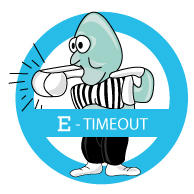


Page 18/30 |
Intermediate Site
 The site contains more information and links. It looks a little "flashier" than the simple site and has more opportunity for interaction with your customers or potential customers (maybe to collect feedback, maybe to take orders). It is more dynamic, as things change more often. Because of that, you have a little more commitment to the technology. Even if you're not doing the maintenance yourself, you need to pay more attention and strategize whether the changes are reflective of your vision and are in line with your business goals.
The site contains more information and links. It looks a little "flashier" than the simple site and has more opportunity for interaction with your customers or potential customers (maybe to collect feedback, maybe to take orders). It is more dynamic, as things change more often. Because of that, you have a little more commitment to the technology. Even if you're not doing the maintenance yourself, you need to pay more attention and strategize whether the changes are reflective of your vision and are in line with your business goals.Intermediate Web sites typically contain five or so pages and multiple graphics.They might include order or feedback forms.There are usually weekly or monthly updates throughout the year, so it has a moderate level of involvement.

For an example of what could be called an "2nd Generation" site, take this
Page 18/30 |
Web site and all contents © Copyright SRDC 2009, All rights reserved. |
|
| These materials were developed as part of the Southern Rural Development Center’s National e-Commerce Extension Initiative. They are based upon work supported by the Cooperative State Research, Education, and Extension Service, U.S. Department of Agriculture, under Award No. 2005-45064-03212 Any opinions, findings, conclusions, or recommendations expressed in this publication are those of the author(s) and do not necessarily reflect the view of the U.S. Department of Agriculture or the Southern Rural Development Center. |
|